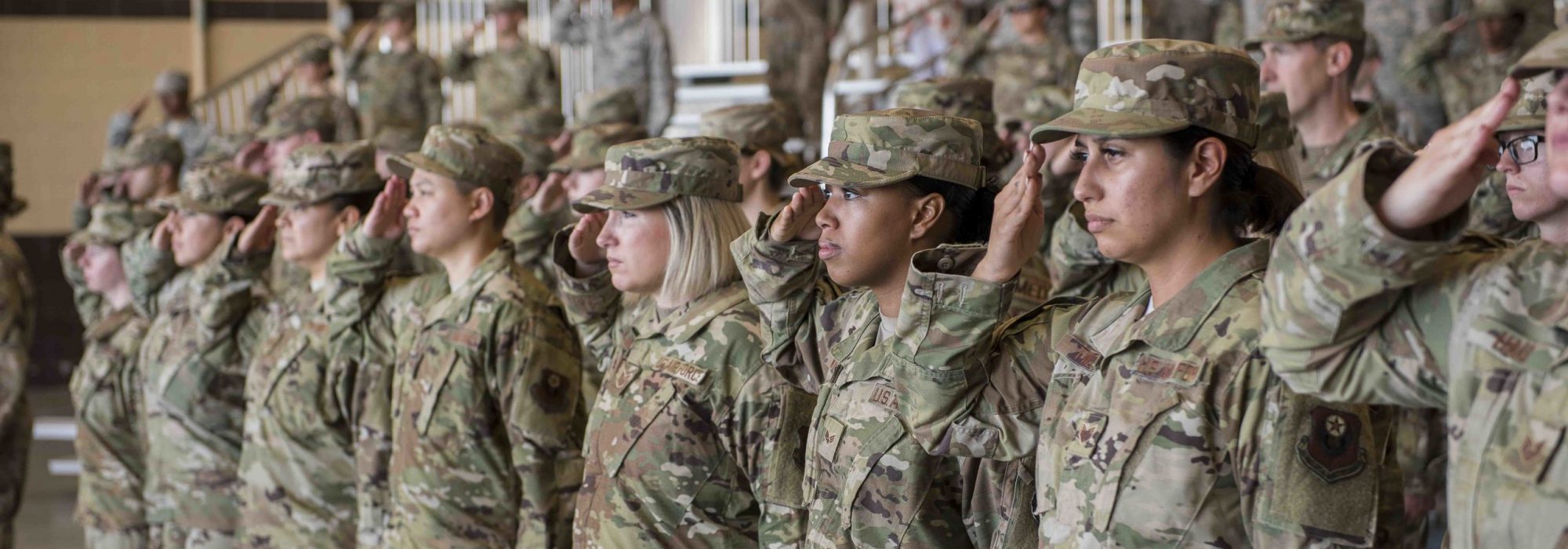Tell us who you think we should highlight here. Write to afmag@afa.org.
Air Force Reserve Maj. Carlos Rojas was aboard American Airlines Flight 1775 in February when a passenger became disruptive, trying to open the plane’s emergency exit. He and an Army officer subdued the individual so the pilot could make an emergency landing. The airline issued a statement expressing appreciation for “the customers who stepped in to assist our crew.” Rojas is a member of the 701st Combat Ops Squadron at March Air Reserve Base, Calif.
When Staff Sgt. Garrett Bodie, saw sparks beginning to catch fire and plumes of smoke from the undercarriage of a truck driving by he pursued the vehicle, reached it at a red light, and informed the elderly driver of the danger, despite a language barrier. Bodie used a fire extinguisher from a local convenience store to contain the fire until emergency personnel arrived.
William Rice added another title to his portfolio: Modern-Day Technology Leader, an honorific awarded to him by the 2022 Black Engineer of the Year STEM Conference. Leaders are men and women who are demonstrating outstanding performance in science, technology, engineering, and mathematics. “To be recognized as an African American engineer means that others can see my accomplishments and know that it is possible to overcome all stereotypes,” he said.
Neil Grimsley and Melissa Rice became the first civilians to graduate from Airman Leadership School at Robins AFB, Ga., on Feb. 10. ALS is the first level of Professional Military Education for enlisted Airmen, designed to be a leadership enhancement course to prepare Airmen for positions of greater responsibility. More and more bases, however, are allowing civilian workers to take the course as well, and Grimsley and Rice are leading the way for more civil servants to follow at Robins.
In August 2019, Chief Master Sgt. Wes Hudgins suffered a serious accident on a dirt bike. The result was 29 broken or fractured bones, including a potentially life-threatening crack in his pelvis. After months in the hospital and multiple surgeries, Hudgins returned to his job in February as the 161st’s Ops Group Senior Enlisted Leader, with plans to keep recovering and eventually run and lift weights again.

Tech Sgt. Amanda Osborne was selected in January to become the Executive Assistant for SECAF on the strengths of her initiatives. She arrived in Australia in early 2019, geographically separated from her wing at Yokota Air Base, Japan. Osborne took on responsibilities as a financial management Airman, the liaison for the Department of Defense Education Activity, Non-DOD School Program, a Tricare liaison, and an additional First Sergeant.

Tech. Sgt. Damien Sawyer was named the Volunteer of the Year for Joint Base Anacostia-Bolling, Wash., D.C., in recognition of his extensive efforts on and off base to mentor and support disadvantaged children and families. Sawyer personally sponsors graduation packages for lower income honors students from his alma mater in New Orleans, has contributed funds to offset travel costs for the school’s girls’ basketball team, and provided students with supplies for summer camp. He also volunteers to distribute food to the local community once a month and mentors students at Anacostia High School. On base, he reads to children at the installation library’s twice-weekly, and he also served as his unit’s interim First Sergeant, providing mental health support, material care, and resolving disciplinary issues for members.
Tech. Sgt. Kinga Cummings immigrated to the U.S. from communist Poland at the age of 14, the descendant of concentration camp survivors. After joining the Air Force in 2009 and gaining years of experience in intelligence work, she was invited to join an investigative team with the Defense POW/MIA Accounting Agency, which helps to locate and return lost U.S. aircraft and service members. Twice now, Cummings has returned to Poland with the DPAA to look for 21 aircraft crash sites that could lead to 67 missing service members, as well as 29 service members who died in POW camps during World War II. As part of that mission, the team interviews local witnesses and their families and uses metal detectors and ground-penetrating radars to search for anomalies in the ground. So far, their efforts have garnered leads on 13 missing people at nine locations for which they secured dig permits.






